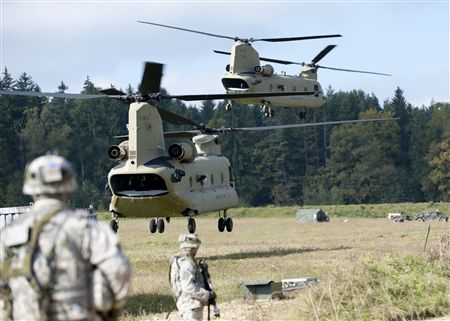
From John Vandiver, Stars and Stripes: Of all the places U.S. troops are stationed around the world, no place seems to cause as much consternation as the military’s robust presence in wealthy western Europe.
With defense spending set to undergo its biggest squeeze in a generation, many lawmakers are once again taking a hard look at Europe and asking the question: What is the military still doing there?
“One of the things we’re hearing a lot around the Hill here is, maybe we don’t need forces in Europe anymore,” said Rep. Buck McKeon, R-Calif., chairman of the House Armed Services Committee, last week during a hearing on the military mission in Europe. “We’re so far advanced there, maybe we can pull all those troops home and it would be a big money savings. And then the way things are going right now financially, that would be a great thing. That’s what we’re hearing.”
The military is already scaling back to accommodate the steep automatic budget cuts mandated by sequestration, with furloughs planned for civilian workers, reductions to numerous on-base services, cuts in training that could eventually hamper readiness and a smaller overall active duty force.
But with still no sign of a deal in Washington to stave off the $500 billion in additional defense cuts that come with sequestration, budgetary pressures and Congressional scrutiny could put further pressure on the military to reevaluate its mission across the Atlantic. . . .
According to a recent report by the RAND Corporation, the Pentagon could save up to $500 billion over 10 years if it would simply tell its European allies in NATO that they now have the security lead in defending shared interests in the region, allowing the U.S. to assume a more backseat role in Europe.
For example, pushing allies into the operational lead around the Mediterranean perimeter, for counter-piracy operations in the Red Sea and the Gulf of Aden and for providing the bulk of ground and tactical air forces that serve as a strategic counterweight to Russia could provide big savings, according to RAND.
America’s European allies together spend 200 billion euros ($260 billion) on defense annually, or about four times more than Russia. . . .
The report, however, notes there is one major risk with the strategy. If the U.S. steps into the operational background, there is no guarantee that allies in western and central Europe will step forward to offset the difference.
Defense spending trends in Europe indicate they will not. . . .
“With average West European and Japanese defense spending of less than 1.5 percent of GDP, low allied defense spending is as much a political choice as an economic necessity,” the RAND report stated. “Thus, as allies decide what to spend on defense, the willingness of the United States to spend on defense appears to moderate any imperative they might feel to increase their own defense spending.”
That sentiment also was echoed by Congress, where late last year the House of Representatives’ version of the National Defense Authorization Act included language that called for the return of troops from Europe amid frustration with allied spending on defense. The idea was scrapped from the final version signed into law by President Barack Obama. But it if the budget wars continue in Washington and the military is forced to get even leaner, calls for more cuts in Europe could grow stronger. (photo: EUCOM)
Image: eucom%201%204%2012%20Chinook.jpg
